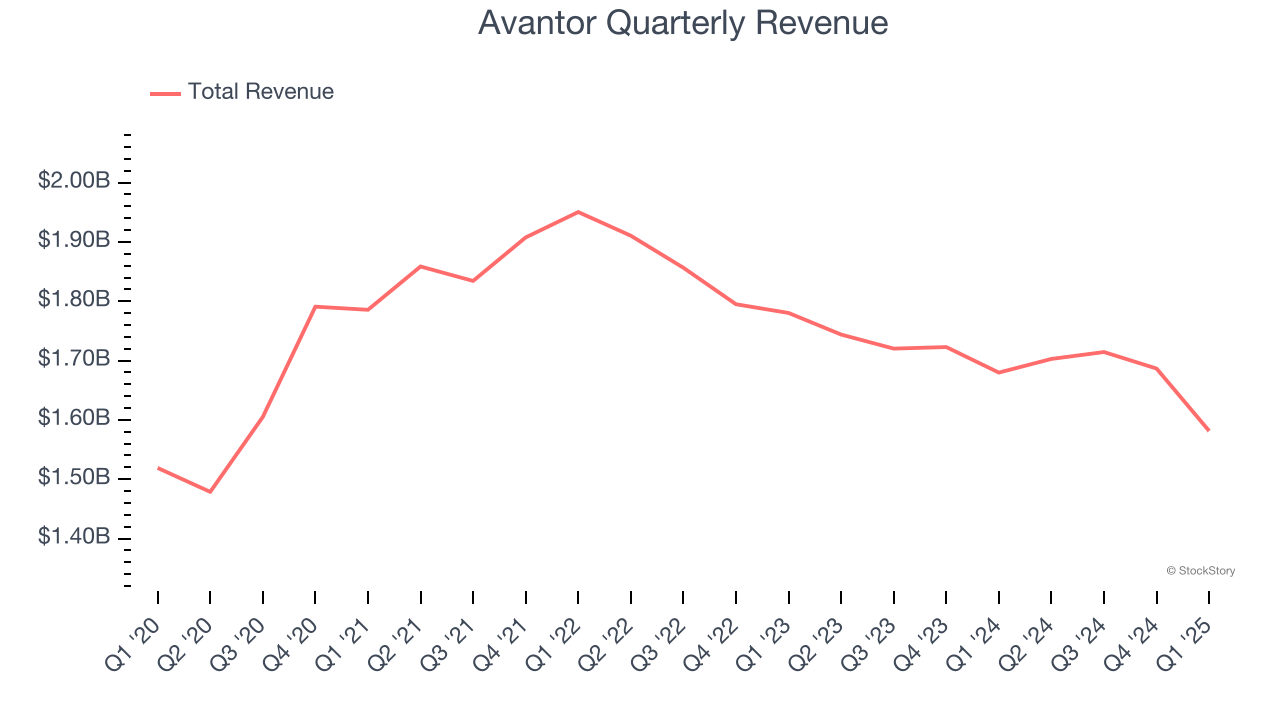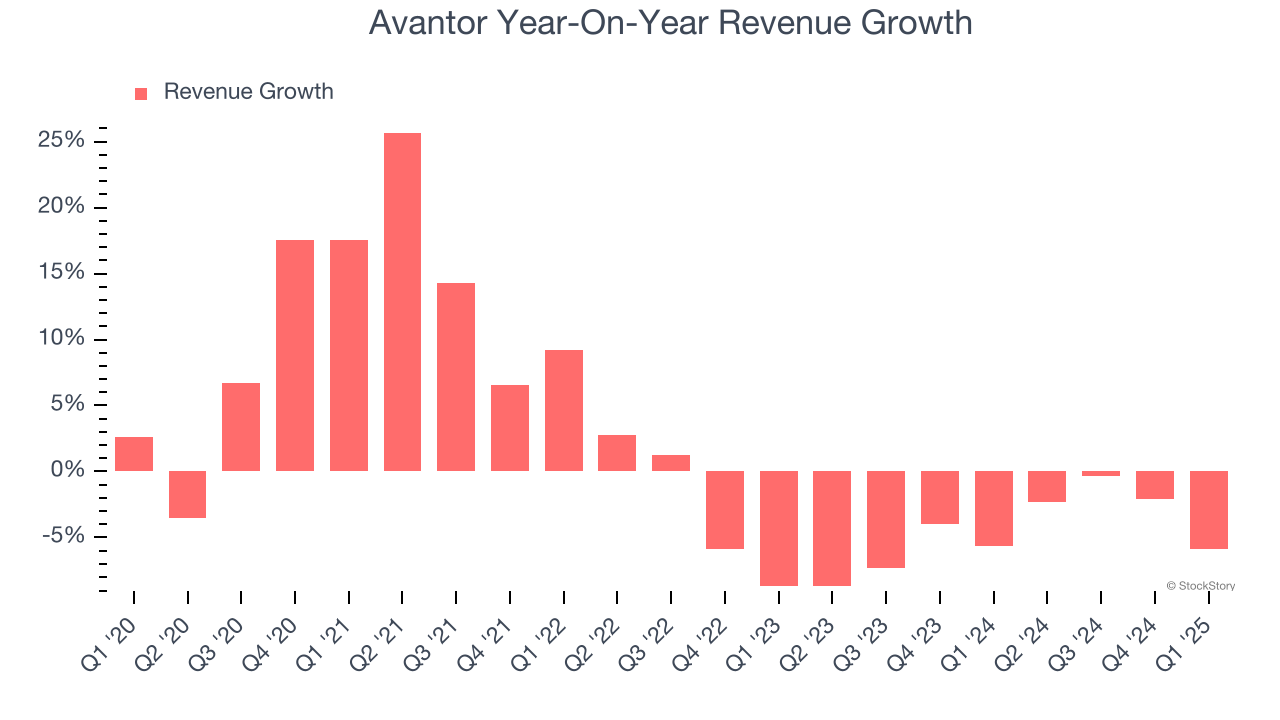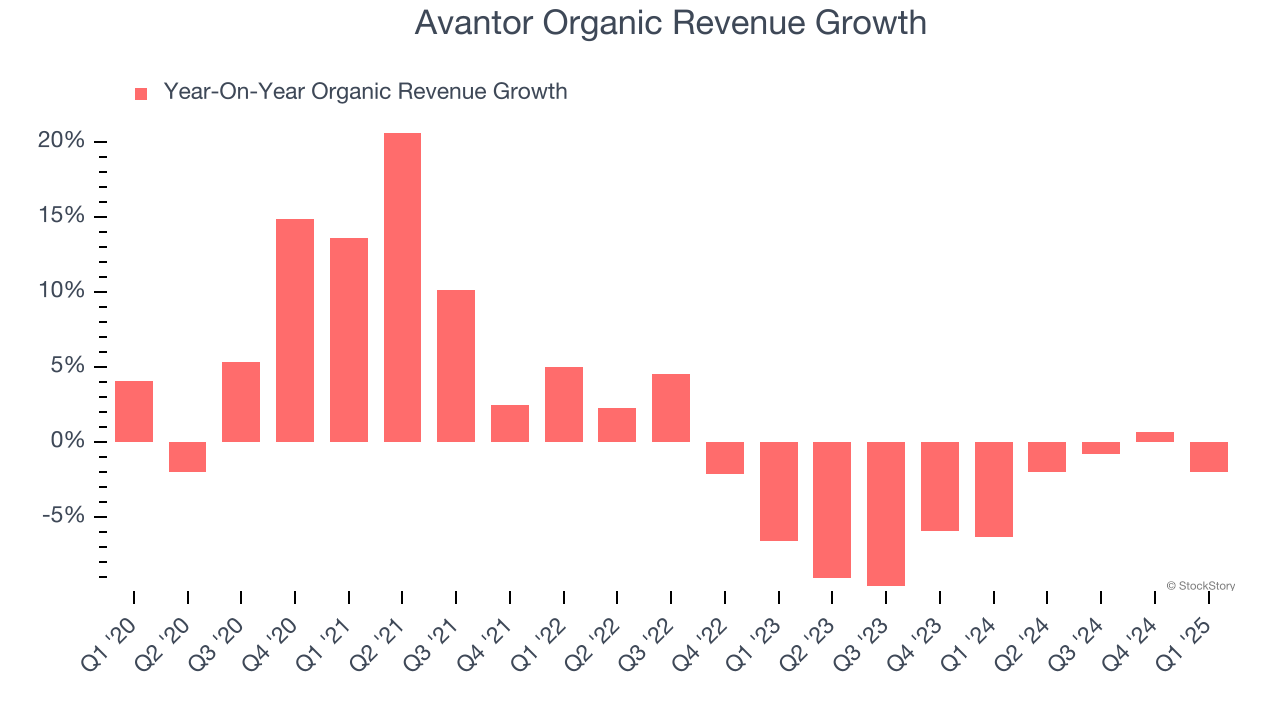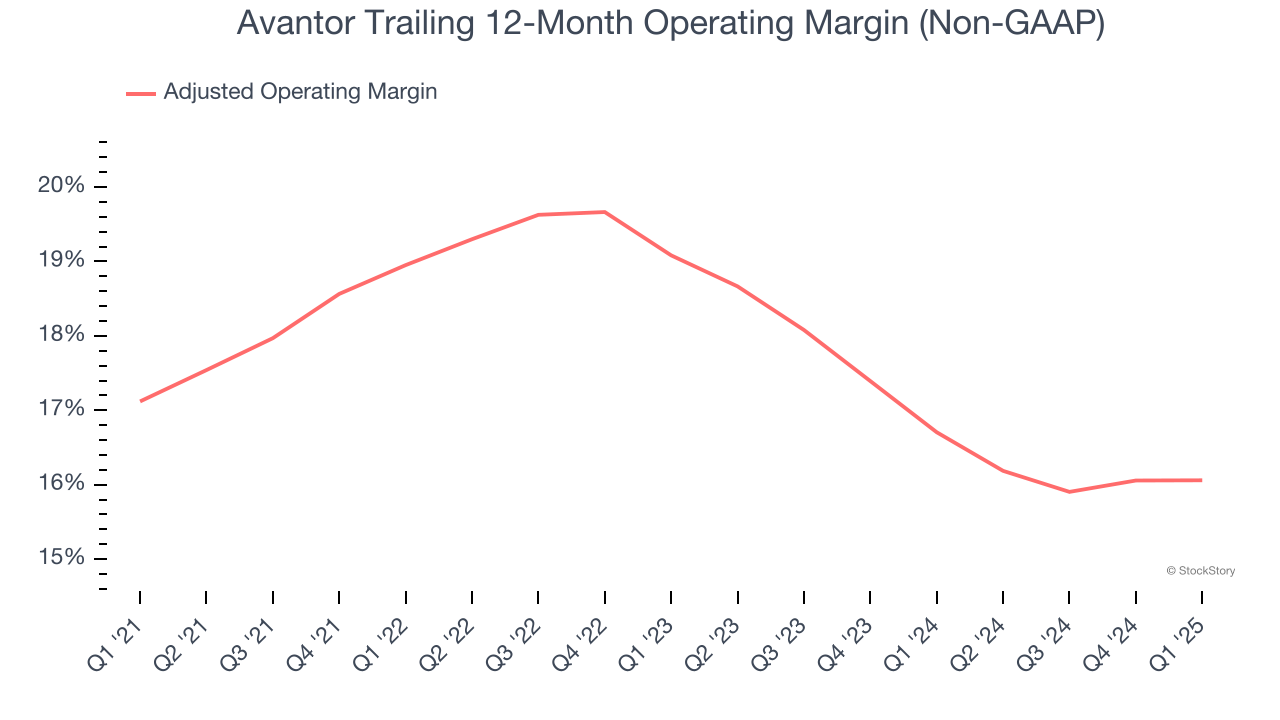
Life sciences company Avantor (NYSE: AVTR) fell short of the market’s revenue expectations in Q1 CY2025, with sales falling 5.9% year on year to $1.58 billion. Its non-GAAP profit of $0.23 per share was in line with analysts’ consensus estimates.
Is now the time to buy Avantor? Find out by accessing our full research report, it’s free.
Avantor (AVTR) Q1 CY2025 Highlights:
- Revenue: $1.58 billion vs analyst estimates of $1.61 billion (5.9% year-on-year decline, 1.6% miss)
- Adjusted EPS: $0.23 vs analyst estimates of $0.23 (in line)
- Adjusted EBITDA: $269.5 million vs analyst estimates of $277.4 million (17% margin, 2.8% miss)
- Operating Margin: 9.3%, in line with the same quarter last year
- Free Cash Flow Margin: 5.1%, down from 6.4% in the same quarter last year
- Organic Revenue fell 2% year on year (-6.3% in the same quarter last year)
- Market Capitalization: $10.56 billion
"Our first quarter results demonstrate disciplined execution and a continued focus on cost management in a dynamic macro environment," said Michael Stubblefield, President and Chief Executive Officer.
Company Overview
With roots dating back to 1904 and embedded in virtually every stage of scientific research and production, Avantor (NYSE: AVTR) provides mission-critical products, materials, and services to customers in biopharma, healthcare, education, and advanced technology industries.
Research Tools & Consumables
The life sciences subsector specializing in research tools and consumables enables scientific discoveries across academia, biotechnology, and pharmaceuticals. These firms supply a wide range of essential laboratory products, ensuring a recurring revenue stream through repeat purchases and replenishment. Their business models benefit from strong customer loyalty, a diversified product portfolio, and exposure to both the research and clinical markets. However, challenges include high R&D investment to maintain technological leadership, pricing pressures from budget-conscious institutions, and vulnerability to fluctuations in research funding cycles. Looking ahead, this subsector stands to benefit from tailwinds such as growing demand for tools supporting emerging fields like synthetic biology and personalized medicine. There is also a rise in automation and AI-driven solutions in laboratories that could create new opportunities to sell tools and consumables. Nevertheless, headwinds exist. These companies tend to be at the mercy of supply chain disruptions and sensitivity to macroeconomic conditions that impact funding for research initiatives.
Sales Growth
A company’s long-term sales performance is one signal of its overall quality. Even a bad business can shine for one or two quarters, but a top-tier one grows for years. Unfortunately, Avantor’s 1.9% annualized revenue growth over the last five years was tepid. This fell short of our benchmarks and is a poor baseline for our analysis.

We at StockStory place the most emphasis on long-term growth, but within healthcare, a half-decade historical view may miss recent innovations or disruptive industry trends. Avantor’s performance shows it grew in the past but relinquished its gains over the last two years, as its revenue fell by 4.6% annually. 
We can better understand the company’s sales dynamics by analyzing its organic revenue, which strips out one-time events like acquisitions and currency fluctuations that don’t accurately reflect its fundamentals. Over the last two years, Avantor’s organic revenue averaged 4.4% year-on-year declines. Because this number aligns with its normal revenue growth, we can see the company’s core operations (not acquisitions and divestitures) drove most of its results. 
This quarter, Avantor missed Wall Street’s estimates and reported a rather uninspiring 5.9% year-on-year revenue decline, generating $1.58 billion of revenue.
Looking ahead, sell-side analysts expect revenue to remain flat over the next 12 months. Although this projection suggests its newer products and services will spur better top-line performance, it is still below the sector average.
Software is eating the world and there is virtually no industry left that has been untouched by it. That drives increasing demand for tools helping software developers do their jobs, whether it be monitoring critical cloud infrastructure, integrating audio and video functionality, or ensuring smooth content streaming. Click here to access a free report on our 3 favorite stocks to play this generational megatrend.
Adjusted Operating Margin
Avantor has managed its cost base well over the last five years. It demonstrated solid profitability for a healthcare business, producing an average adjusted operating margin of 17.6%.
Looking at the trend in its profitability, Avantor’s adjusted operating margin decreased by 1.1 percentage points over the last five years. This performance was caused by more recent speed bumps as the company’s margin fell by 3 percentage points on a two-year basis. We’re disappointed in these results because it shows its expenses were rising and it couldn’t pass those costs onto its customers.

In Q1, Avantor generated an adjusted operating profit margin of 15.4%, in line with the same quarter last year. This indicates the company’s overall cost structure has been relatively stable.
Earnings Per Share
Revenue trends explain a company’s historical growth, but the long-term change in earnings per share (EPS) points to the profitability of that growth – for example, a company could inflate its sales through excessive spending on advertising and promotions.
Avantor’s EPS grew at an unimpressive 4.9% compounded annual growth rate over the last five years. This performance was better than its flat revenue, but we take it with a grain of salt because its adjusted operating margin didn’t expand and it didn’t repurchase its shares, meaning the delta came from reduced interest expenses or taxes.

In Q1, Avantor reported EPS at $0.23, up from $0.22 in the same quarter last year. This print was close to analysts’ estimates. Over the next 12 months, Wall Street expects Avantor’s full-year EPS of $1.01 to grow 8.7%.
Key Takeaways from Avantor’s Q1 Results
We struggled to find many positives in these results. Its organic revenue missed and its revenue fell short of Wall Street’s estimates. Overall, this quarter could have been better. The stock remained flat at $15.35 immediately following the results.
The latest quarter from Avantor’s wasn’t that good. One earnings report doesn’t define a company’s quality, though, so let’s explore whether the stock is a buy at the current price. We think that the latest quarter is only one piece of the longer-term business quality puzzle. Quality, when combined with valuation, can help determine if the stock is a buy. We cover that in our actionable full research report which you can read here, it’s free.




